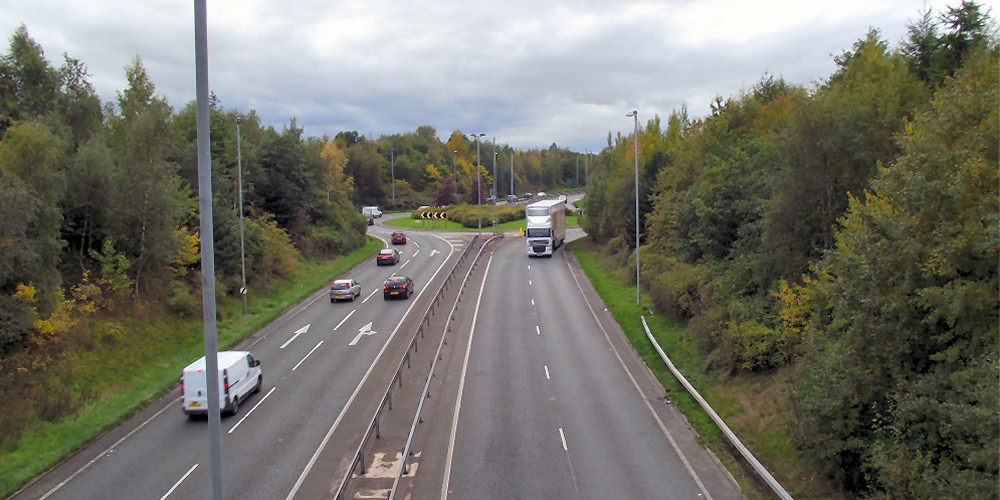
Dual-carriageways often have higher speed limits than other roads.
With traffic legally travelling at speeds up to 70 mph and sometimes (illegally) faster, dual-carriageways have a central reservation of grass or concrete to separate streams of traffic flowing in opposite directions; these ‘central reservations’ almost always have a crash barrier.
There will generally be two or more traffic lanes in each direction separated by white lines.
Although the average speed on dual-carriageways is higher than on other roads (with the possible exception of motorways), you will still have to deal with the hazards that you find on two-way roads, for example:
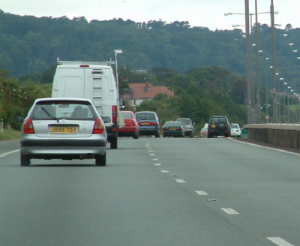
cyclists
slow vehicles
traffic lights
crossroads
Roundabouts
side turnings
gateways
You must exercise particular care, especially when joining and leaving dual carriageways.
Clearways:
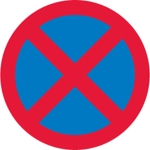 Most dual-carriageways are clearways (but not all clearways are dual-carriageways).
Most dual-carriageways are clearways (but not all clearways are dual-carriageways).
Clearways are roads on which you are not allowed to stop. Stationary vehicles would pose extreme danger to fast-moving traffic.
Not all driving test routes include sections of dual-carriageway. Of those that do, some will be out-of-town dual-carriageways and others urban dual-carriageways with differing speed limits.
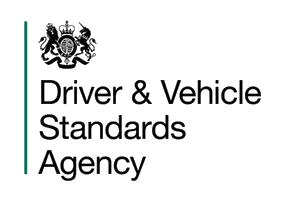
The examiner will want to see:
Speed appropriate for the road and traffic conditions, making progress when appropriate
Good use of your hazard routine when entering and leaving dual-carriageways
Safe overtaking (you don't have to overtake but if you do have cause to overtake it must be done safely)
Good anticipation and awareness of other all road users
The signs shown below are typically found before, on, or immediately after dual-carriageways.
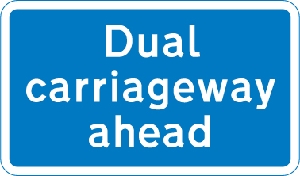
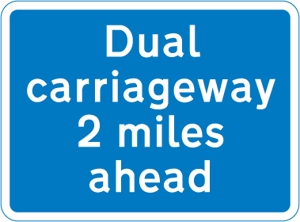
The signs above indicate that you are approaching a dual-carriageway (be patient if you are thinking of overtaking!)
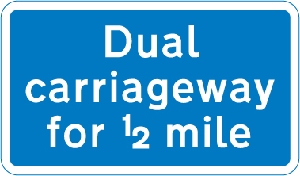
This tells you that there is a short dual-carriageway
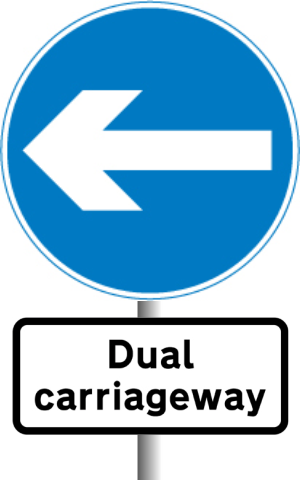
You will see this sign if you enter a dual-carriageway from a t-junction or premises (for example, a garden centre or other car park)
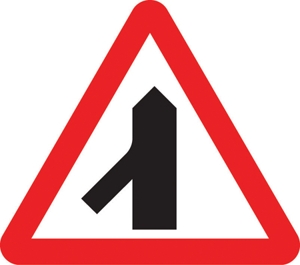
When on a dual-carriageway, this sign show that there is traffic merging from the left ahead.
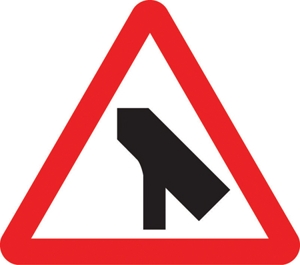
You are approaching a dual-carriageway and will merge from a slip road.
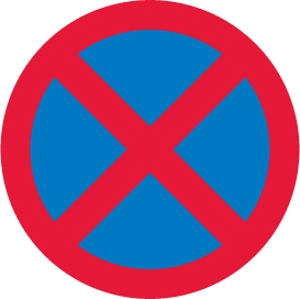
Clearway - no stopping for any reason (other than breakdowns or emergencies)
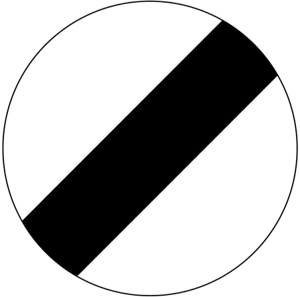
National speed limit (70 mph on a dual-carriageway)
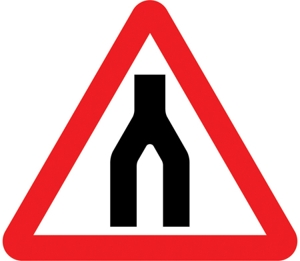
You are approaching the end of a dual-carriageway (there might also be a distance plate under the sign)
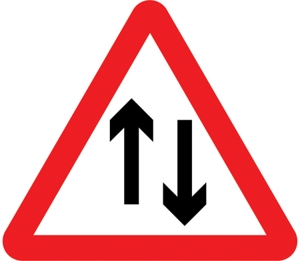
You are entering - or have entered - two-way traffic.
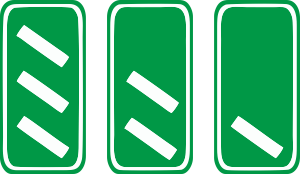
Countdown markers indicating 300, 200 and 100 metres to an exit road or roundabout.
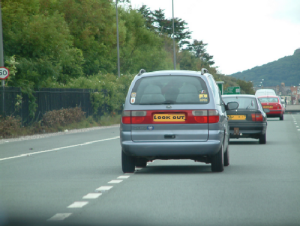
Although there are still many conventional T-junctions and crossroads on dual-carriageways, motorway-type slip roads are becoming more common.
When entering a dual-carriageway from a slip road, you will use the 'acceleration lane'.
The acceleration lane is an extra lane on the left where you can build up your speed before merging with traffic in the main driving lanes to join the fast-moving traffic flow safely.
The method for joining dual-carriageways from a slip road is the same as you will use for joining motorways later on, but unlike motorways, there are extra hazards to look out for. Watch out for cyclists and pedestrians on urban dual-carriageways. It has even been known for mobility scooters to use dual-carriageways.
The full routine for joining a dual-carriageway from a slip road is:
Mirrors and signal:
Even though it should be obvious to drivers on the dual-carriageway that you intend to pull into the traffic (there's nowhere else to go at the end of the slip road!) - a signal is helpful because some drivers are not as alert as they should be.
The picture (above) shows how NOT to do it! The driver of the silver car is pulling out without signalling - by doing this, they risk upsetting others or taking 'half asleep' drivers by surprise.
Watch for a gap:
You need to assess the traffic as early as possible as you approach and look for a safe gap. Once you have identified the gap, concentrate on the car you will follow (not the vehicle you intend to pull in front of).
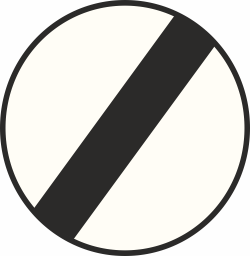
Adjust your speed:
Use the slip road and acceleration lane to adjust your speed to match the traffic in lane one of the dual-carriageway (the lane you will be moving into). Too fast and you risk getting too close to the car ahead; too slow and you will inconvenience the following traffic.
When thinking about your speed, you must be aware of the length of the slip road - a long slip road will allow you to get up to quite a high speed. However, not all slip roads are long, especially on dual-carriageways in town. On short slip roads, you will need a larger gap in the traffic; alternatively, you will need to accelerate hard (as a general rule, we don't recommend hard acceleration).
In a car with manual transmission, choose a gear to fit with the traffic flow on the dual-carriageway. You might need to select a lower gear to accelerate into a gap; this would often be from 5th (or 6th) to 4th, although 3rd might sometimes be necessary.
In an automatic car you might need kick-down, but more often than not, you can allow your vehicle to decide the gear for you.
In an electric car, control your speed through the power pedal.
Joining the traffic flow:
Just before moving into position in lane-one, it might be necessary to have a quick glance over your right shoulder. There is a possibility that a vehicle may be hidden in your blind spot. But be careful - this is just a QUICK GLANCE.
You might be travelling as fast as 70 mph, approximately 33 metres per second - so you need to look where you are going! In one second, you will travel over 31 metres - your glance will take less than a second, so the distance will not be a problem as long as you keep a minimum two-second gap between yourself and the car ahead.
Look for speed limit signs. On a dual-carriageway, the National Speed Limit sign means a maximum of 70 mph.
Remember the basic rule for 'emerging' - only pull out into the main traffic flow if you are sure it's safe and that you will not inconvenience other drivers.
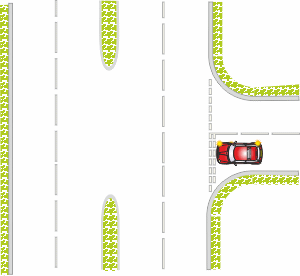
If you join a fast dual-carriageway from a T-junction, take extra care when judging the speed of traffic on the main road.
You will need time to build up your speed from a standstill. This means that you will need a much longer gap than when you are emerging into traffic on slower, two-way roads.
Some left turns on to Dual-carriageways will have acceleration lanes; use the procedure described above for a slip road if this is the case.
If you are turning right into a dual-carriageway, wait until both sides are clear unless there is a large gap in the central reservation. There must be enough room in the gap for you to stop, without inconveniencing or endangering traffic on the carriageways. If the gap in the centre is large enough, you can treat each carriageway as a separate road.
The red car shown in the diagram would not be able to wait safely in the central gap. While it could probably fit into the gap if it were positioned at an angle, it would obstruct the road for any traffic that wanted to leave the dual-carriageway. It would also be difficult to see the road properly from that position.
The vehicles in the photograph below show how much space you need to stop and wait safely in the central gap.
Many central gaps are now being closed and replaced with traffic lights, roundabouts, flyovers or alternative routes because they tend to be dangerous accident black-spots.

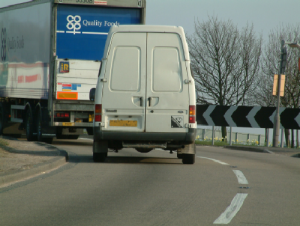
On some dual-carriageways, you will leave via a deceleration lane and an exit slip road. On others there will be a regular junction or perhaps a roundabout.
Regardless of the exit type, you will need to act much sooner than you would on slower two-way roads to allow for higher traffic speeds.
Deceleration lane:
When you leave via a slip road, you will often find a 'deceleration lane' - an extra lane on the left that runs parallel with the main carriageway.
The deceleration lane allows you to slow down without holding up the traffic behind. Generally, you shouldn't need to start braking (or fully lifting off the power in an electric car) until you enter the deceleration lane.
Some exit slip-roads have sharp curves like the one shown in the picture. These can pose a problem if you don't look at the speedometer to check your speed. Always check your speedometer, don't trust your judgement alone.
When driving long distances at high speeds on fast roads like dual-carriageways and motorways, your perception of speed can change - when you slow down, 50 mph might feel like 30 mph. In other words you might be going much faster than you think.
Mirrors:
Check your mirrors early. If you are overtaking, aim to move into the left-hand lane about half a mile before your exit.
Signal:
On fast dual-carriageways, you will need to signal left much earlier than on other roads. Other drivers need plenty of warning about your intention to turn off.
Where there are countdown markers, signal at the three hundred yard marker (the one with three white bars) and maintain the signal until you have left the main carriageway. You might need to signal again if the slip road finishes at a roundabout or other junction - if this is the case, you need to go through the complete MSM routine again.
Position:
Maintain speed and position (normal left lane position) until you reach the start of the deceleration lane. Recheck your mirrors (all mirrors), and then move to the left to enter the deceleration lane.
It's not usually necessary to ease off the gas (power) before joining a deceleration lane unless it is very short.
If drivers behind are not responding to your indicator signal, a gentle touch on the brake pedal might be helpful to activate the brake lights as a gentle warning that you intend to slow down. In electric vehicles, the brake lights activate when the regenerative braking kicks in; however, be careful. If you come off the power too much to activate the lights, you could slow down too soon, creating more danger.
(Important - this is not to 'brake check' the driver behind, you are doing it to switch on your brake lights as a safety warning without reducing speed immediately).
Speed:
After joining the deceleration lane, use your footbrake to slow down. Remember, if you have been driving at high speed for a while, you should check your speedometer - you might be going faster than you think.
When advising about motorways, the Highway Code says:
" ... your speed may be higher than you realise - 50 mph may feel like 30 mph. Check your speedometer and adjust your speed accordingly. Some slip-roads and link roads have sharp bends, so you will need to slow down."
This applies equally to dual-carriageways.
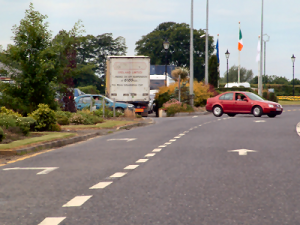
Mirrors:
Check your mirrors early, moving into the left-hand lane about half a mile before your exit.
Signal:
Remember that other drivers need plenty of warning about your intention to turn off. The timing of your signal will depend on the prevailing traffic speed.
Position:
Sometimes there will be a designated turn lane as, shown in the picture. If there is no left turn lane, stay in your normal road position until the turn.
Speed:
Your speed must be slow enough to turn safely, or to stop if there is an obstruction in the side road. You must also think about following vehicles - if another vehicle is following much too closely, you might have to slow down a bit extra on approach to give the driver behind time to react when you turn. Check your speedometer.
Mirrors:
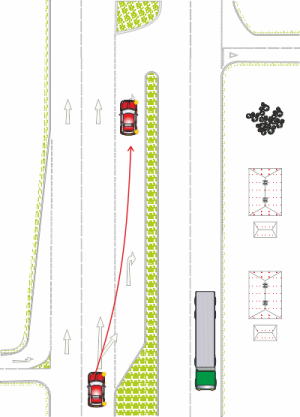 Check your mirrors early, moving into the right-hand lane about a quarter of a mile before your exit. It's important not to move to the right too early because you might hold up faster-moving traffic. On the other hand, if you are too late, you might not have time to get safely into position.
Check your mirrors early, moving into the right-hand lane about a quarter of a mile before your exit. It's important not to move to the right too early because you might hold up faster-moving traffic. On the other hand, if you are too late, you might not have time to get safely into position.
Signal:
Signal early before moving to the right-hand lane - remember that other drivers need plenty of warning on fast roads.
Keep the signal on after changing lanes to let drivers behind know why you are in the right-hand lane - if you cancel your signal, they might think that you are simply overtaking slower traffic and not expect you to slow down.
Position:
Move to the right-hand lane early, as described above.
Sometimes there will be a designated right turn lane, as shown in the diagram. If there is no right turn lane, maintain your normal road position until the turn.
Speed:
As with a left turn, your speed must be slow enough to turn safely or to stop if there is an obstruction in the side road.
Remember the traffic behind - if another vehicle is following too closely, you may have to slow down sooner on approach to give following drivers time to react when you turn.
Take special care when judging the speed of the traffic coming towards you. Remember that you have two lanes to cross and that traffic will often be approaching faster than on two-way roads. With this in mind, the 'walk across rule' from the right-turns lesson might not give you enough time.
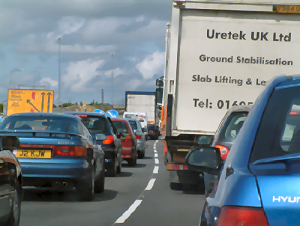
As a general rule, the traffic on dual-carriageways will be travelling at higher speeds than on two-way roads. But as you can see from the picture, this will not always be the case!
Driving at higher speeds means that things happen more quickly than on most two-way roads. This is why it's essential to use your driving routines positively and early so that other drivers have no doubt about your intentions - and so that you know where the other drivers are and what they are doing!
A word of warning about speed:
In some places, there are regular speed limit changes on dual-carriageways, particularly in urban areas.
Many of the drivers around you will be breaking the speed limit. Avoid getting 'sucked' along with them!
Keeping pace with traffic that is travelling too fast means that you will have a bigger accident! The fact that other drivers also broke the speed limit will not be a defence against a fine and penalty points.

Overtaking on dual-carriageways is much safer than on two-way roads because all traffic flows in the same direction (no oncoming traffic). But to overtake safely, you follow a basic routine.
Drive in the left-hand lane and only move to the second or third lane for overtaking (some dual-carriageways have three or even more lanes). You are only permitted to overtake on the right. However, you can pass vehicles on the left if you are in a traffic queue that is moving faster than the one to your right; but you should never change lanes to the left to pass other vehicles.
Mirrors & Signal:
With faster-moving traffic, it's essential to judge the distance of following vehicles accurately - remember that convex door mirrors can make vehicles appear to be further away than they are. Start your mirror checks early; remember, everything happens faster at high speed. Recheck your mirrors after signalling to see how drivers behind are reacting - very occasionally, the following driver will act 'stupidly' and speed up - if this happens, let them pass and start the routine again.
Position before overtaking:
You need to keep well back from the vehicle you intend to overtake for three reasons.
When you steer out, the movement should be gradual and not sudden
If you get too close you might have to slow down to a speed that will make it difficult to pull out into a safe gap
The drivers of large vehicles will not be able to see you in their mirrors if you are too close.
Speed:
Your speed must be fast enough to overtake safely but without breaking speed limits. With this in mind:
Manual: Make sure you select the gear that's best for acceleration (often 5th to 4th or 3rd gear).
Automatic: You might need kick-down, especially when moving into a gap in the right-hand lane. This is to ensure that you do not inconvenience the following traffic.
Electric (and CVT): Be positive with your acceleration but use the pedal smoothly.
The need to change down, kick down or accelerate firmly is not as great on dual-carriageways as it is on two-way roads. This is because you have much longer (time) to overtake and so you don't need a 'burst of speed' - but you still will need to overtake and move back to the left reasonably quickly to avoid holding up the traffic behind.
Look:
Look well ahead. Is there anything ahead that might cause the 'target' vehicle to pull into your path? Is it safe to pull out?
MSM:
Make your final mirror checks, and if it is still safe, signal to pull out and accelerate briskly past the 'target'. Move back to the left as soon as it is safe - make sure you can see the vehicle you have overtaken in your mirrors before moving in.
If you are in lane two or three and someone wants to overtake you, let them!
Having an angry driver behind you will be distracting, reducing your safety. Even if the driver behind is breaking the speed limit and driving badly, it is not your job to try and enforce the rules. Move back to the left to allow them to pass. You can move out again when they've gone - it won't affect your journey time.
It's best to have angry or erratic drivers in front of you where you can see what they are doing - let them have their accident somewhere else - without you!
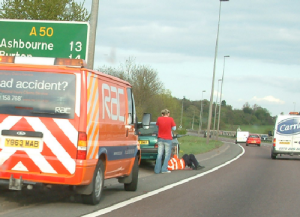
A breakdown on any road can cause problems, but on dual-carriageways the problems are much greater because of the higher traffic speeds, especially if there is no hard shoulder.
Perhaps the best advice here is, don't break down! You can find advice about avoiding breakdowns in the DriverActive Driver's Area (see Driving Alone).
Because journeys on dual-carriageways sometimes involve high-speed driving for a long distance, your vehicle is subject to more stress and strain, possibly making a breakdown more likely.
If you suspect that there might be something wrong with your car, pull off the road at the first possible opportunity and seek help.
If you break down, take the following precautions:
If possible, move your car off the main carriageway, onto the hard shoulder, or into a lay-by.
If there is no hard shoulder, try to move your vehicle onto the verge but be careful in summer - your hot exhaust pipe could set fire to dry grass. If you cannot move your vehicle, do everything possible to make it conspicuous.
Turn on your hazard warning lights and use a warning triangle to warn other drivers.
As soon as your car is in a safe place, telephone for help; if the car is in a position where it might be a danger to others, contact the police.
It is usually safer for passengers to wait on the grass verge or behind the crash barrier.
Animals should be left in the car unless you are 100% sure they are under total control and securely restrained (for example, keep dogs on a leash – cats and other pets in suitable pet carriers).
 Dual-carriageways Quiz...
Dual-carriageways Quiz...Click here to complete the quiz for this lesson
(The page will open in a new window/tab)
You will find references for the answers in this lesson.
You can check your answers as you go along, or complete the full quiz before checking.
Leaving the check to the end is a good way to test yourself.
When you check or review your answers you will get a brief explanation of the answer.
Good Luck!